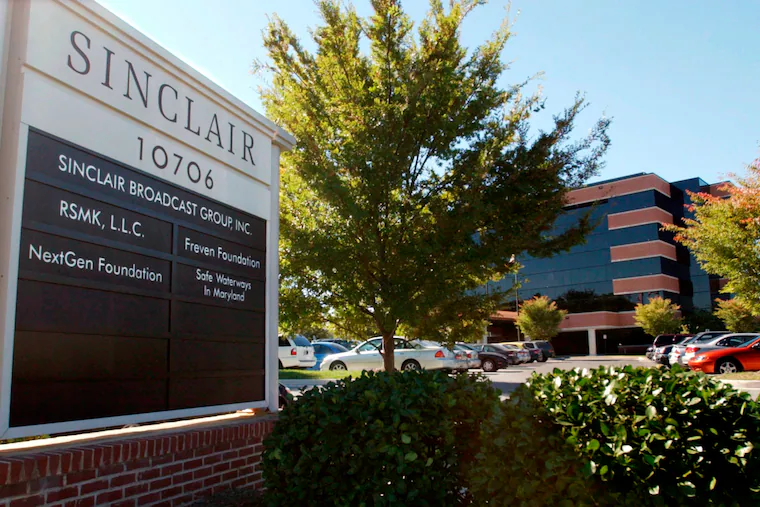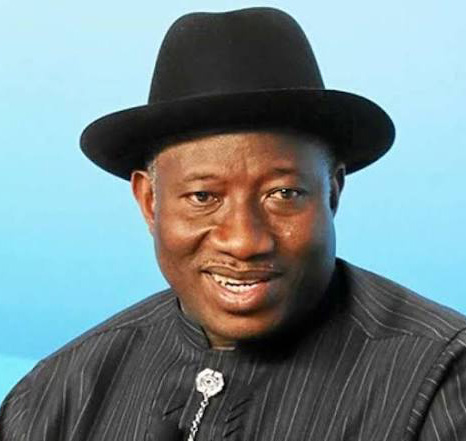
There are some things the average American just doesn’t know. The name of their local state senator, for example. Or their Netflix password. Or which faceless conglomerate owns their local TV station.
That probably changed for a lot of folks in the Washington, D.C., area at precisely 11:30 p.m. on Tuesday, when they tuned into WJLA-TV — the capital region’s ABC affiliate, Channel 7 — hoping to see the much-anticipated return of late-night comic Jimmy Kimmel, whose three-night suspension over politics had rocked the nation.
Instead, viewers were treated to a rerun of the station’s local newscast, whose name must have seemed ironic to many angry viewers: 7News on Your Side. The plot twists didn’t stop there .As Deadline reported, the lead story — about the restoration of an African American cemetery in the Maryland suburbs — quoted a local official: “In this era of Trump erasing history, Maryland has to take action.”
Meanwhile, WJLA — owned by Sinclair Broadcast Group, which is controlled by a family of ultra-conservative Donald Trump supporters — was busy erasing the present by refusing to return to its airwaves a comedian known for skewering the president. The impasse might keep Jimmy Kimmel Live! off not just D.C.’s Channel 7 but Sinclair’s 37 other ABC affiliates for a while, with the broadcasters and the comedian at odds over how to apologize for comments about the Charlie Kirk assassination.
Overall, nearly 70 stations from Oregon to Mississippi to Maine — those owned by Sinclair or Nexstar, a rival conglomerate that’s currying favor with the Trump regime as it seeks approval for a $6,2 billion mega-merger — are continuing this week to blacklist Kimmel for his political commentary, exacerbating America’s biggest crisis over the First Amendment and free speech in decades.
But the amplified role of once largely anonymous TV middlemen like Nexstar and Sinclair have also raised serious new questions around whether a few players have too much control over what you can watch, or the content of your local news. For years, a small band of good-government watchdogs and media reformers have been screaming from the rooftops that the growing concentration of power in just a few companies was a looming crisis for democracy — and hardly anybody listened.
The ongoing silencing of Kimmel on so many local channels is a sudden wakeup call, but have we already overslept?
Just last month, when Nexstar announced its plan to acquire a rival owner of TV stations, Tegna, the advocacy group Free Press warned that these national chains have no commitment to quality local news, and that communities will suffer. The group’s Craig Aaron argued that “the companies leading the charge for more consolidation see local news only as a vehicle for serving political ads and spreading right-wing propaganda.”
On Wednesday, I spoke with Stanford Business School associate professor Gregory J. Martin, whose research has focused on the impact of media consolidation. His papers with other experts have shown that dramatic changes in TV-station ownership have brought major changes to the news that local viewers watch, and that in some cases — especially when Sinclair comes to town — that journalism becomes more national and skewed to the right.
“In a lot of markets, they’re getting less local news and more national news, both because of the packaging” — Sinclair has a team producing national segments that air on multiple stations — “but also because of the political slant of the owners,” Martin said. Now, the decisions by Sinclair and Nexstar to ban Kimmel’s return to the ABC lineup have taken the problem of centralized media control to new heights.
Most major media that was born, or flourished, in the 20th century — not just local TV outlets, but radio stations and newspapers — have transformed in recent decades from mostly local or regional owners to large national chains, as a capitalistic push for economies of scale was welcomed by growing government deregulation.
Beginning around the 1990s, three industry players — Sinclair, Nexstar and Gray Television — started growing exponentially. Today, these three companies control about 40% of all local stations, including their newsrooms, that overall reach about 80% of the U.S. population.
Martin pointed to a couple of factors: the ability of larger chains to reduce both back-office expenses and — as Sinclair has done, aggressively — shared news reports, but also their appeal to advertisers who can now reach a number of small- and medium-sized markets with one buy. He said the TV conglomerates “produce segments in a central studio and then distribute them to a whole bunch of stations at once. That’s potentially a big cost savings over having 100 different local reporting teams going out and producing their own stories.”
» READ MORE: Kimmel return proves we can beat back autocracy | Will Bunch Newsletter
No system of media ownership is perfect. Most press-freedom advocates prefer distinct, locally-owned newsrooms because that means more journalists filing more reports on matters that their community cares about. But owners can also reflect their hometown’s worst instincts.
At the height of the 1960s’ civil rights movement, some locally owned network affiliates in the Deep South were notorious for censoring national news about the struggle for Black freedom, or even just shows that featured African American performers. A Jackson, Miss. station, WLBT, ran a message “Sorry Cable Trouble from New York” to blackout NBC’s reporting on the Brown v. Board of Education school desegregation ruling, allowed reporters to use the N-word, and carried the Citizens’ Council Forum that gave airtime to segregationists. After years of challenges, a federal judge stripped its license in 1971.
But media consolidation offers a different insidious threat: a politically motivated owner imposing one viewpoint across dozens of metro areas, whether the citizens want that or not. Exhibit A has long been Sinclair, whose founders and longtime controlling owners, the Smith family, espouse deeply conservative, pro-Republican political views that align with a longtime push for deregulation to buy more stations.
Among the many controversies surrounding the collision between the Smiths’ right-wing politics and local-newsroom independence is the prevalence of so-called “must-run” segments, such as conservative editorials or weekend programming, that it requires affiliates to air — even in heavily Democratic markets like Seattle.
In the most famous, and widely lampooned, example, a viral video in 2018 mashing up the identical words of scores of Sinclair local anchors warning their viewers, quite ironically, about the rise of “fake news” provided an Orwellian view of what it can look like when one perspective is imposed on multiple cities.
There’s no doubt that, in the internet and smartphone era, the audience for local TV newscasts is both smaller and older than it used to be. But research suggests that as many as 64% of Americans get information from local newscasts at least sometimes. One study from 2008-18 found that viewers in markets where Sinclair had acquired stations became more likely to disapprove of Barack Obama and the Democratic Party.
The censorship of Jimmy Kimmel is where this thing was always headed. For Sinclair, it’s a matter of ideology. The broadcast group has insisted that Kimmel not only apologize directly to Kirk’s family but make a donation to the slain activist’s organization, Turning Point USA. That seems unlikely — raising that prospect that Kimmel could be off the air in D.C. and other key markets for some time.
It’s a political issue for Nexstar, too, but the issue isn’t red politics, but the green of increased profits. Although Federal Communications Commission ownership rules aren’t what they used to be, the current standard is that no one company is allowed to reach more than 39% of the country. That’s why Nexstar and its Tegna takeover needs the FCC and its chair, pro-Trump pit bull Brendan Carr, which has all but certainly influenced its ongoing blacklisting of the hated-by-Trump Kimmel.
One company controlling too many TV stations was a terrible idea two weeks ago, and now the censorship by Sinclair and Nexstar has shown this to the broader public. I know the Nexstar-Tegna acquisition looks like a done deal in the current climate, but public opposition prevented the FCC from approving a similar move for Sinclair during Trump’s first term. Pro-democracy forces must fight this to the bitter end.
And that’s not the only way to fight back. In Seattle, angry protesters have picketed the Sinclair-owned ABC affiliate, KOMO, and threatened to boycott the station’s advertisers, because the only way to their warped heart is through their wallet. The movement for food that is locally sourced has been happening for years. It’s past time for the news, and television, to get back to its roots.



